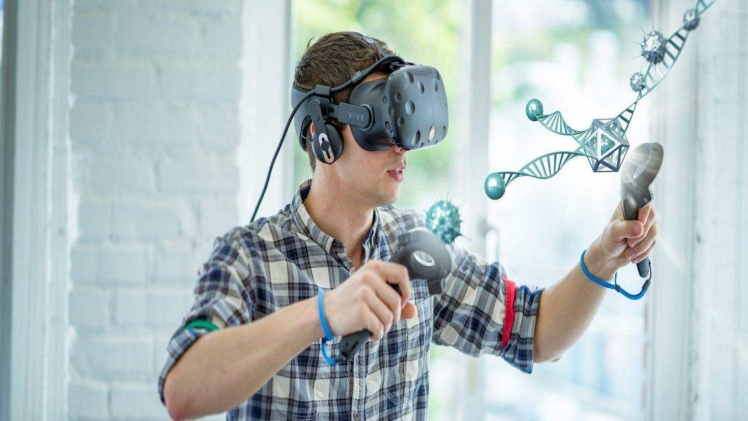Virtual reality (VR) first surfaced in the 1935 science fiction short story “Pygmalion’s Spectacles.” This idea was revolutionary for the time and, like walking on the moon, only a dream. However, just like Neil Armstrong became the first person on the moon.
The Path to Virtual Reality in Education
How did cutting-edge technology become so widely available? According to Wired, the Oculus Rift—a headset with a monitor that immersed the user in a 3D world released in 2012—was one of the first steps toward widespread adoption. Since its debut, virtual reality has not only changed how we play video games but also how we perceive the entire digital
Since 2012, virtual reality has gone through a considerable technological transition. The technology has gotten progressively more accessible as headsets have shrunken, grown portable, and improved in power. Additionally, 5G cell phones allow you to enter the virtual world from any place in the world.
With accessible technology and virtual reality (VR) growing more popular, it’s becoming increasingly realistic for schools to adopt the technology. VR has entered the classroom through cameras with 360-degree recording capabilities as well as innovative applications like Google Expeditions, providing new ways for instructors and pupils to think about education. According to tech website Built-In, usage of
Traditional vs. VR Education
Throughout history, how pupils learn has stayed pretty much the same. Fact retention instruction has long been the standard method of teaching. The typical classroom experience consists of studying for tests, sitting in lectures, and trying to imagine history through a textbook.
Virtual reality, on the other hand, has made it possible for students to learn about their subjects in more immersive and enthralling ways. VR may take students from their seats to ancient ruins, allow them to combine volatile chemicals and witness the reaction without being physically harmed, and enable them to not merely observe but also interact with virtual environments.
Touch here: hub4u Visit here: likepost and More here: yahoview
VR will benefit students in six ways:
- Better sense of place: Students may learn about a topic by engaging with it.
- Learning experiences at scale: Educators can use virtual labs to save money and make learning more accessible.
- Learning by doing: Instead of simply reading, children may learn by doing activities.
- Emotional reaction: Educators offer students special, one-of-a-kind experiences that will help them recall more information NFT Pictures.
- Creative development: Students can be more creative with new technology such as Tilt Brush.
- Visual learning: Visual learners’ comprehension of educational material may be improved by teachers.
- Visit here online best thaibettingnews.com website.
Educational Use of VR
Virtual reality in education has a variety of applications that help both teachers and children.
New Teacher Training and Lesson Prep
Teachers are frequently expected to enter the classroom straight after receiving their bachelor’s degrees. However, when it comes to putting their knowledge into practice, they must still acquire a great deal of real-world expertise.
VR has the potential to help teachers prepare for their roles as early Esports Events as possible
Digitized Classroom Sessions
One of the most interesting features of VR is that it may be used to create a 3D model, which can then be shared with others. Many schools have decided to embrace virtual reality technology as an educational tool to enhance their students’ and teachers’ learning experiences. Virtual reality (VR) recordings and recreations allow students and instructors to get
Teachers may find that utilizing a virtual classroom environment allows them to teach more effectively. Teachers may discover things about their student’s learning styles and how they approach teaching through recording and modifying classroom sessions.
Enhanced Learning Opportunities
Virtual reality also opens up new possibilities for student field trips and laboratory experiences. Educational excursions were previously restricted by cost, distance, and accessibility, but VR removes these obstacles and provides an infinite number of alternatives.
Students could explore virtual reality areas created by Google Expeditions, from swimming with whales to visiting Mars. Real school buses have been converted into VR environments by replacing windows with 4K displays, allowing students to ride them.
The National Association of College and Research Educators reports that research laboratories are also being digitized, saving money, giving over 100 different experiments, and making lower-income communities more able to access them.
Lead the Future of Education
Teacher education is also changing as virtual reality becomes more essential, accessible, and beneficial to schools. Steantycip provides solutions for equipping future leaders with the skills they need to use cutting-edge technology like virtual reality in education. Both master’s programs equip educators with the knowledge and skills needed to progress their professions and improve teaching methods by incorporating technology in their classrooms.

